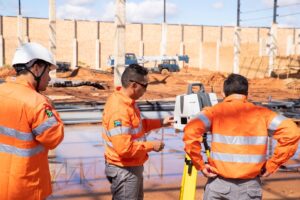

In the engineering and design community, there is always a lot of discussion surrounding what the future holds. What new technologies will be developed? Which ones will become obsolete? And how will these changes impact the way we work? As we move further into the 21st century, it’s clear that technology is playing an increasingly important role in engineering and design. In fact, many of the latest engineering design trends are being driven by new technologies. In this article, we’ll take a look at some of the most promising new technologies and how they are likely to impact the field of engineering in the years to come.
Building Information Modelling (BIM)
Building information modelling (BIM) is a technology that is revolutionizing the way engineers and architects design buildings. With BIM, all of the information about a building — such as its dimensions, structural elements, and finishes — is stored in a single digital model. This makes it much easier to coordinate between different disciplines, and it also allows for more accurate cost estimation and scheduling.
3D Laser Scanning
3D laser scanning is another technology that is starting to have a major impact on engineering design. Laser scanners are able to create highly detailed 3D models of existing structures, which can be used for a variety of purposes, such as providing as-built documentation, carrying out inspections, and retrofitting existing buildings.
3D Modelling
During the design process, engineers often use 3D modelling software to create digital prototypes of their designs. This allows for quick and easy experimentation, and it makes it much easier to spot potential problems with a design before it is built. In recent years, the quality of 3D models has increased dramatically, thanks to the increasing power of GPUs and other advances in computer hardware.
Reality Modelling
Reality modelling is a technology that is used to create accurate 3D models of real-world environments. This is typically done using LiDAR (light detection and ranging) scanners, which are able to capture millions of points of data per second. Reality models can be used for a variety of purposes, such as construction planning, site inspection, and disaster relief.
Additive Manufacturing
This type of manufacturing, also known as 3D printing, is a technology that is used to create physical objects from digital designs. This is done by building up the object layer by layer, using materials such as plastic, metal, or concrete. Additive manufacturing is often used for prototyping and small-scale production, but it is also starting to be used for larger-scale applications, such as the construction of buildings and bridges.
Drone Technology
Drones are becoming increasingly popular in a number of industries, and engineering is no exception. Drones can be used for tasks such as surveying land, carrying out inspections, and delivering small parts to remote locations. In the future, it is expected that drones will play an even bigger role in the engineering field.
The Bottom Line
These are just a few of the latest technologies that are having an impact on engineering. Building information modelling, 3D laser scanning, 3D modelling, virtual reality, and augmented reality are all changing the way we design and build things. And as drone technology continues to develop, it is likely that we will see even more changes in the years to come.
Need Help with Your Engineering Project?
If you’re looking for help with your engineering project, C3D is here to help. We are a team of experienced engineers, designers, and project managers who can help you with all aspects of your project, from concept development to construction management. Contact us today to learn more about our services.